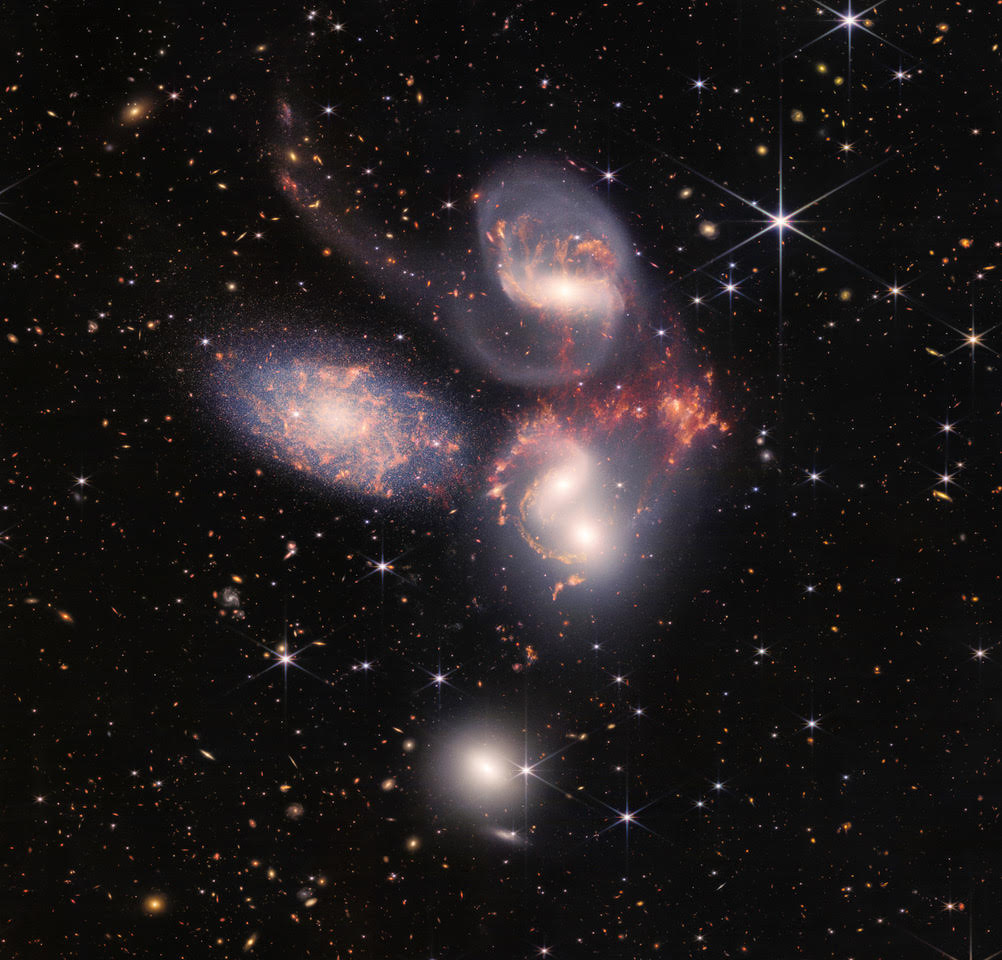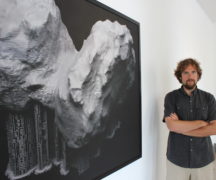By DAVID DUPONT
BG Independent News
Aaron Sayer suspects that some of his DNA is now 1 million miles from his Bowling Green home.
As a metallurgical engineer at Materion in Elmore , Sayer had the lead role in formulating the beryllium used in the mirrors of the James Webb Space Telescope. He touched those mirrors now a million miles away.
So being part of a scientific breakthrough was all in a day’s work. Not that he, along with the scientific community and public, isn’t agog at the images the satellite is now beaming back from deep space, visions from billion of light years away, visions from the deep past.
As one commentator on social media told him: “In a way, you’ve touched eternity.”

When the telescope was launched at 7 a.m. on Christmas Day, Sayer gathered his family, his wife, Kirsty and their five children – two of whom weren’t even born when he started working on the project – to watch on NASA TV. Four months later the telescope was in position, and after two months of adjustment, it sent back its first image on July 11, a day early thanks to a request by President Joe Biden. Then the images came streaming back on July 12.
That was quick given the pace at which the project moved before then.
Sayer said he was recruited by Materion in 2003. There were few experts in beryllium metallurgy, and he wasn’t one of them, at that point.
“I had experience as quality engineer from my previous job and also understood manufacturing environments,” he said. And Materion felt they could mold him for the job.
NASA had already approved Materion’s proposal to use beryllium for the mirrors. “It ticked off most of the boxes,” said Sayer, a senior process engineer “This grade of beryllium was designed and used only for the James Webb telescope.”
Beryllium can be polished and coated so that it detects white light and infrared light. “It’s better than glass,” Sayer said, “and very lightweight, which is important when you’re throwing something a million miles into space.”
The process was exacting. Each of the 18 mirrors, each measuring 55 inches across, had a thick folder to record the results of all the processes and tests it had to undergo. NASA checked each step of the way.
These were among the largest structures the company had handled, so the manufacturing process was unique to the project.
“I was in charge of blending those powders to make sure the chemistry was what NASA wanted,” Sayer said, and that the mirrors had the qualities that would enable them “to survive launch and that journey a million miles out and still have these reflective properties.”
The images that flashed back earlier this month were the final proof. The images are already yielding scientific discoveries.
“Webb has – in a single observation – revealed the unambiguous signature of water, indications of haze, and evidence for clouds that were thought not to exist based on prior observations,” NASA reported on its web page.
Materion delivered the mirrors in three years. “It was only part of the whole project on time and on budget,” Sayer said. “After that it went bonkers.”
The original launch date was 2007, which was unrealistic and probably set for appropriation purposes. Then it was 2010, and then it kept moving up by a couple years.
The launch date “was a running joke at work,” Sayer said.

The company worked on other applications for beryllium involving nuclear projects, both in pharmaceuticals and power generation. That includes work on the next generation of nuclear power plant involving fusion being developed in France by an international consortium.
Then early last fall, NASA seemed to be seriously moving toward a launch. The telescope was shipped to the International Spaceport in French Guiana from where it would be launched.
Launched and in place the James Webb Telescope is delivering intensely detailed images never before possible. The infrared technology allows it to mitigate the dust in the atmosphere.
What it is seeing, Sayer said, will be in textbooks. “We’ll learn more about the Big Bang and how the Earth was created.”
NASA Administrator Bill Nelson stated: “These images, including the deepest view of our universe that has ever been taken, show us how Webb will help to uncover the answers to questions we don’t even yet know to ask; questions that will help us better understand our universe and humanity’s place within it.”
The telescope could identify exoplanets with atmospheres that could support life. “We’re just scratching the surface of what it’s going to find,” Sayer said. Scientists will take years to go through all the data that Webb is providing.
“It will change some of the science beyond space. It will teach us more and change truths. That I was part of it is very exciting.”


